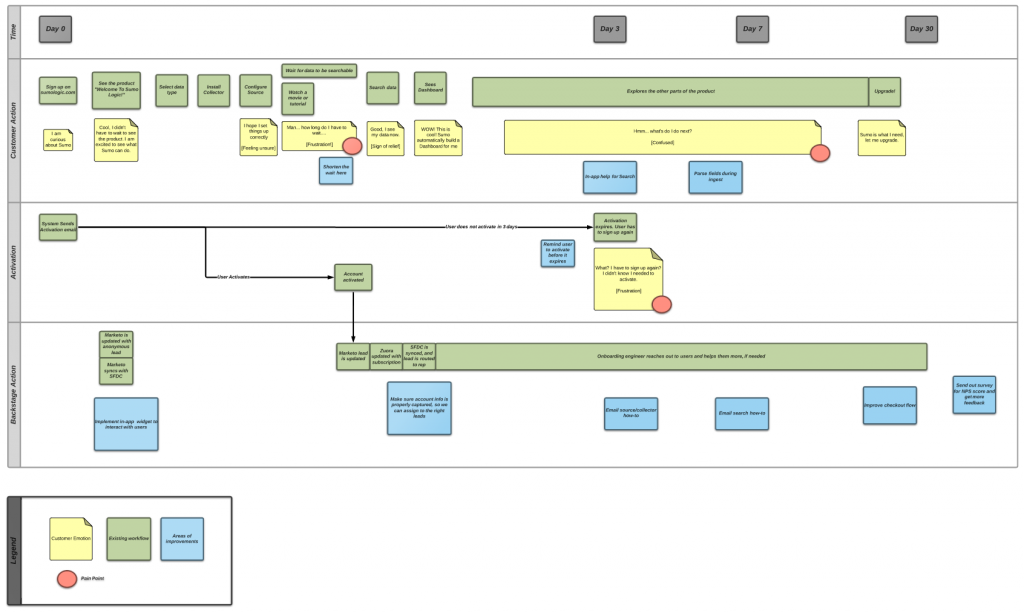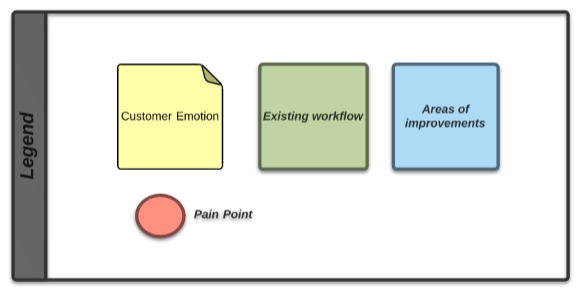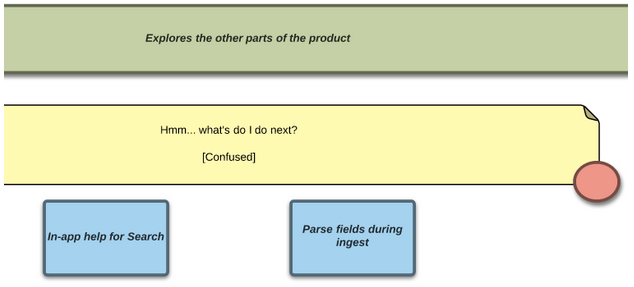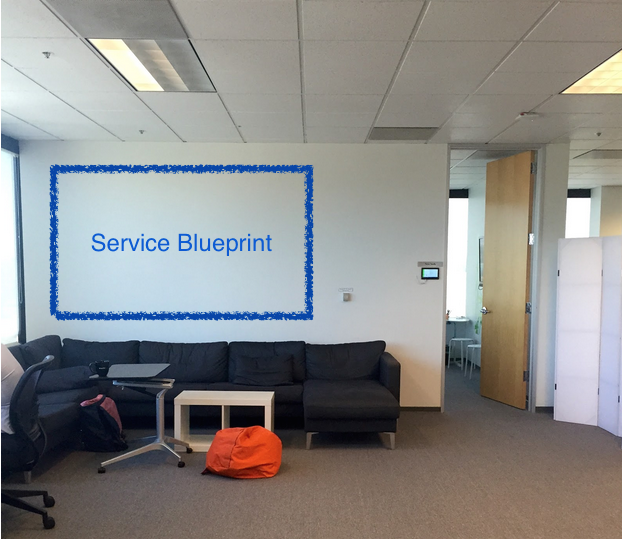
4 reasons why you should put together a Service Blueprint for your service:
- You understand that providing a cohesive customer experience is a requirement in today’s service-oriented society
- You want to understand your customer experience in its entirety
- You want to identify places where you can improve the entire customer service experience
- You want to motivate people in different parts of your organization so that you can work together to improve your customer experience from all touchpoints
A couple of weeks ago a group of us attended the “Transforming Customer Experience” training at Cooper U. We had participation from User Experience, Customer Success, and Product Management. Together we want to unite cross functionally to have greater impact within the Sumo Logic organization, so that we can improve our service offering from all possible touchpoints. We are a service company, and we know that providing a cohesive customer experience is a requirement that is more important than ever in today’s service-oriented society (think, Uber and Airbnb).
One of the most valuable lessons I learned in this class is the benefit of using the primary tool of service design – the Service Blueprint. The Service Blueprint includes the customer journey as well as all of the interactions and touchpoints that make up and support that journey.
After sitting down and creating the Service Blueprint for the Sumo Logic Setup Wizard (which recently went through a dramatic UX transformation), it helped me look beyond the Setup Wizard so that I can evaluate all the other backend systems that make up the customer’s entire journey.
The Service Blueprint for the Sumo Logic Setup Wizard starts off with the user signing up for the service on the website, going into the product, stepping through the wizard, seeing the Wow moment, and upgrading at the end of the 30 day trial. The multiple swimlanes capture the backend systems that support this entire journey: sending the activation email, syncing with Marketo, which then syncs with Salesforce, which then creates the lead and then routes to the appropriate Sales manager, at the same time our Onboarding engineers also get notified and they then reach out to the user providing assistance to get them fully set up in Sumo Logic.
The existing workflow is marked in green. After mapping out the existing workflow, I then identified the customer emotions in the yellow boxes. Wherever the emotion is not entirely positive, I put a red circle next to it identifying them as pain points in the journey.
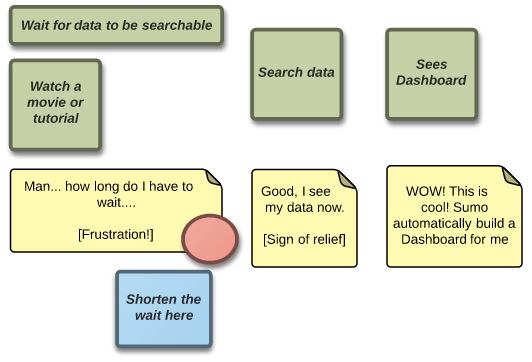
Identifying pain points make it clear that we need to come up with improvements, marked in blue. For example, we know that waiting for a long time to see data in Sumo Logic is a frustrating experience, therefore we plan to keep on iterating on this portion of the workflow to shorten the wait, so that our users can get to a dashboard as soon as possible and visualize their data. This is the Wow Moment in the entire journey.
The journey doesn’t just stop after the Wow Moment though, we need to continue to enhance the journey because the ultimate goal is provide the values that our users are looking for so that they feel compelled to upgrade to a paid account. After mapping this out on the Service Blueprint, it is now very clear visually that we need to shorten this portion of the journey as well – the time to conversion – as much as possible, because at the same time the Onboarding engineers are spending time helping customers onboard. To improve this, we plan to build in more in-app help, enhance our nurturing emails to point users to helpful tutorials and documentation, and to automatically parse fields during ingest so the important fields already come parsed by the time the user is ready for search.
The next step is to put the Service Blueprint on a big wall somewhere in the office where everyone can see, and then invite other parts of the organization to review it together so everyone can contribute in adding more ideas on how we can improve the overall customer journey.
A Service Blueprint can clearly identify the interactions between the user, touchpoints, and service employees, including the activities that the user can directly see and those that user does not see. Therefore, it is a very powerful tool that can be used to better deliver a successful customer experience holistically; it is a great tool in the way that it makes it easy to explain a long-running and complicated process in just a few minutes, which adds tremendous value in getting multiple minds together to collaborate on a problem.
To summarize, here’s why you should put together a Service Blueprint for your service:
- You understand that providing a cohesive customer experience is a requirement in today’s service-oriented society
- You want to understand your customer experience in its entirety
- You want to identify places where you can improve the customer service experience
- You want to motivate people in different parts of your organization so that you can work together to improve your customer experience from all touchpoints
